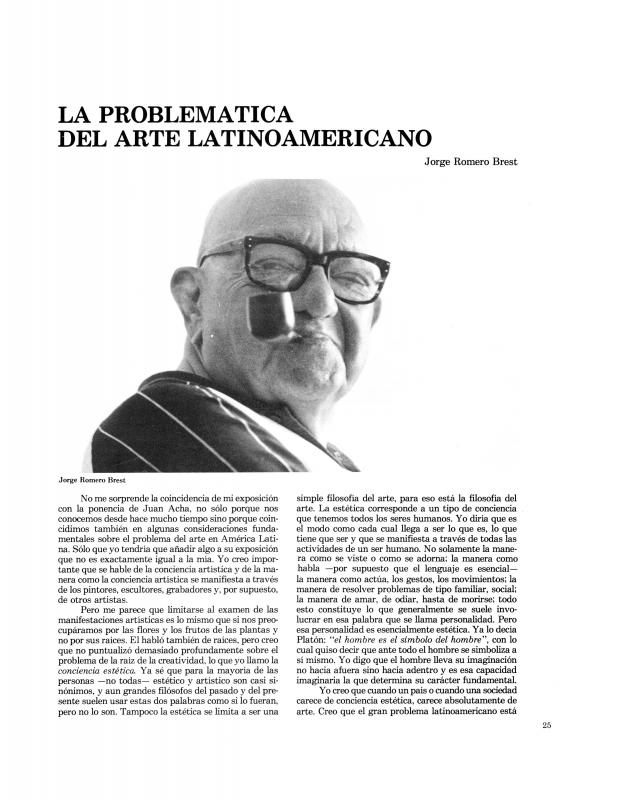This unsigned interview with Jorge Romero Brest (1905–89) published in the weekly Jaque took place in 1985 on the occasion of the critic’s visit to Montevideo to act as a juror for a city-wide juried show. In the interview, Romero Brest ponders cultural and artistic issues with a skeptical point of view. For decades, Romero Brest was a point of reference in art criticism in Latin America. He was the director of the Museo Nacional de Bellas Artes in Buenos Aires from 1955 to 1963; a professor and critic, he was the editor and director of a number of journals, among them Ver y Estimar. In the sixties, Romero Brest was the director of the Buenos Aires-based Departamento de Arte del Instituto Di Tella. Due to its innovative programs, that institute was a center of avant-garde experimentalism in the region [on this subject, see in the ICAA digital archive Romero Brest’s “La problemática del arte latinoamericano” (doc. no. 805676)]. In this interview in Uruguay, Romero Brest’s assessments are seen as “categorical and alarmist,” and the “skeptical cultural critic” as a frenetic “postmodernist.” He makes the brash statement that “easel painting has no cultural relevance.” In fact, the datedness of easel painting had been proclaimed well before by muralist and political activist (and easel painter) David Alfaro Siqueiros in his manifesto for Ejercicio Plástico, a project carried out in Buenos Aires in 1933 by a team that included Antonio Berni and Lino Enea Spilimbergo. Romero Brest takes aim at the Latin American cultural imaginary, which he considers a “mental construction” with no grounding in reality: “Latin America does not exist […] It is a great utopian tale.” Due to his internationalism, he disregards the continent and its individual countries because artistically incoherent. For the critic, great painters in a country do not ensure great national painting if they look to external patterns. In other words, the specific achievements of each country are nothing but the “history of a second-rate nationalism.” Notwithstanding, he has “a personal tie” to Uruguay, and he claimed that although his visit there in the eighties was not political, it did “support the recently restored democracy.” This was not the first time that Romero Brest had visited Uruguay; his stance against Peronism meant that he had trouble finding work in Argentina in the early fifties, so he taught in Uruguay. Indeed, he exercised great influence on future Uruguayan critics as a professor at the Facultad de Humanidades y Ciencias de la Educación y Agrupación Universitaria. An opponent of art competitions, Romero Brest expresses regret at having agreed to sit on this jury in an ambiguous stance typical of some other critics.

